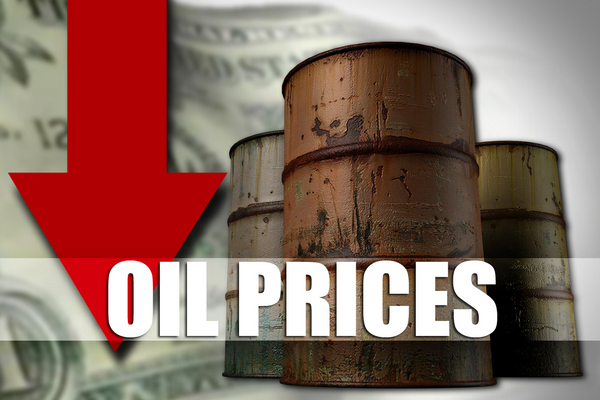As global oil prices plummet, China, the world’s second largest importer, should be thrilled. Importing over 6 million barrels per day (mbpd) of oil is certainly cheaper at $50/bbl than it was at $110/bbl, just under a year ago. But the mood in Beijing isn’t all that victorious.
To be sure, falling oil prices mean that China’s trade surplus can swell a little, and consumers get an effective tax cut which they can use to consume more. At the same time, the government can use the extra revenues to clean up the country’s polluted skies and invest more in subsidising alternative fuels. Now that oil prices are low, Beijing can also cut subsidies for fossil fuels and move ahead with pricing reforms that were too contentious when oil prices were high. And indeed, since the summer, Beijing has been adjusting retail diesel and gasoline prices downwards, but these decreases do not reflect the full magnitude of the collapsing global crude oil prices. Prices of Brent and WTI have decreased by almost 55% since June, while domestic diesel prices have only fallen by 25%. The government has also raised the oil consumption tax on three occasions. So even though Chinese drivers are benefitting from the lowest prices on record since 2009, the government still wants to curb their appetite for driving, and for further polluting China’s skies.
The ability of low oil prices to bolster economic activity is also limited. Lower oil prices, which mean cheaper inputs, benefit heavy industry. But over time, lower commodity prices will also lead to a drop in product prices while wages and other fixed costs are all increasing. Corporate profits will therefore also end up suffering. Finally, Chinese decision makers are already concerned with the disinflationary pressures weighing on the economy. Lower oil prices that pose additional deflationary risks will only worsen the country’s high debt level.
For China’s oil and gas companies, low oil prices also present challenges. CNPC–China’s largest oil and gas company—saw its profits fall by 6.2 in the third quarter of 2014 while revenues at CNOOC were down 4.6% year on year. The falling return on investments from Iraq through to Brazil will continue to weigh on their balance sheets as the break even costs of production there are estimated at well over $60/bbl. And with lower revenues from their upstream assets, Chinese majors’ ability to invest in their strategic goals, including developing unconventional resources or investing in the Arctic, could also come undone.
Yet there are also opportunities. The oil companies’ revenues are still high enough to sustain a spending binge on prime assets, should foreign oil companies or oil-producing governments decide to put them up for sale. And Beijing will step in to support the state-owned oil companies if there are strategic acquisitions on the table. Since China remains one of the most important sources of oil demand growth globally, producers—be they affluent Persian Gulf producers such as the UAE or Kuwait, or cash strapped Venezuela and Russia—are looking to bolster their relations with China. Increasingly, oil producers that have been reluctant to offer Chinese firms’ stakes in developing their oilfields are now more inclined to do so. Moscow’s offer to sell CNPC a 10% stake in Vankor, a major oilfield and a significant asset, is a case in point. In the past, Russia sought to limit Chinese upstream stakes to relatively small stakes in less developed fields.
Oil producers’ need to secure a share of the Chinese market also supports Beijing’s efforts to diversify its import sources. Producers looking to secure an outlet for their barrels must outbid each other for a share of the Chinese market. As a result, in 2014, oil imports from Saudi Arabia fell by 12% year-on-year while imports from Russia increased by 36% and Latin American crude supplies rose by 21%.
Finally, low oil prices have allowed China to fill its strategic petroleum reserve (SPR) at a low cost, and ahead of the government’s schedule. According to a study by Energy Aspects and China Matters, this year alone, China has added more than 100 million barrels to its stocks, bringing Beijing closer to its 500 mb SPR target by 2020. For China’s NOCs, who have been the targets of anti-corruption probes, this is a good way of scoring political brownie points with a government that remains concerned with energy security.
That sense of insecurity, however, will take more than low oil prices to shake off. China’s oil imports remain vulnerable to disruptions. Chinese strategists warn that if Washington chose to, it could cut off oil supplies to China. Washington’s strategic relations with many of the Persian Gulf’s key producing countries and its dominant position in securing maritime transport routes raise concerns in some quarters in Beijing. What is more, even though the U.S. “tight oil” revolution and surging oil production in the U.S. has freed up oil supplies from the Middle East and West Africa for China, it also means that the U.S. has less to lose from interruptions in oil flows. These perceptions—as distant as they may be from Washington’s intentions—inform some of Beijing’s hedging policies. They also mean that Chinese leaders are by no means sanguine about their external supply security, even when it comes with a reduced price tag.



